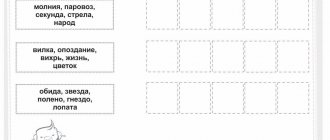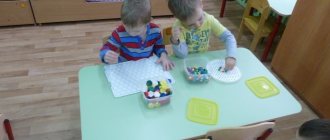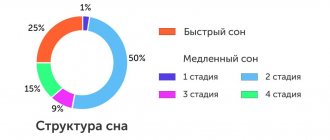Mnemonics (mnemonics techniques) are special methods of memorizing certain types of information, based on the peculiarities of human psychology, as well as on the four rules of memorization that were given in previous lessons. Knowledge and use of special mnemonics will allow you to better remember digital information, specific texts and terms, names, faces and surnames, foreign words, expressions and much more.
This lesson will cover the basics of mnemonics, and also describe the basic techniques and methods for memorizing various types of information.
What is mnemonics?
Mnemonics or mnemonics
- These are specially developed techniques and methods that make it easier to memorize certain types of information. In some textbooks and courses, authors use the term “mnemonics” to denote the entire set of techniques and methods for memorizing information used for certain data, and the term “mnemonics” is interpreted as the practical application of methods defined for a given specific mnemonics.
The main principle of any mnemonics is the replacement of abstract objects with concepts that have a visual, auditory or, less often, other sensory representation, linking objects with existing information (building associations) to simplify its memorization.
The best books on mnemonics
Finally, a small selection of useful books on the topic:
- Joshua Foer “Einstein Walks on the Moon. The Science and Art of Memory"
- Boris Nikolai Konrad “How to remember everything! Secrets of the world champion in mnemonics”
- Anton Moguchiy “The most complete training book for brain development! New trainings for the mind”
- Ilya Melnikov “The best ways to remember”
- Stanislav Muller “Remember everything: secrets of supermemory. Book-simulator”
- Anton Moguchiy “Use your brain 100%! Book-simulator for the development of the mind and memory”
Even more books for memory development can be found in our separate publication.
Basic mnemonic devices:
The applied arsenal of modern mnemonics consists of a large set of unified memorization techniques. Among the main mnemonic techniques and methods are the following:
- Letter code. Formation of semantic phrases from the initial (or purposefully assigned) letters of memorized information.
- Associations. Finding vivid, unusual associations that connect to memorized information.
- Rhymes. Creating rhyming pairs of words or even short poems containing memorized material.
- Consonance. Memorizing terms or foreign words using consonant already known words or phrases.
- Roman room method. Assigning memorized objects to specific locations in a room you know well.
In this lesson, for ease of learning, all mnemonics will be divided into groups depending on the type of information that these mnemonics help to remember.
Mnemonic phrases
A mnemonic phrase represents a short, often rhyming sentence. Mnemonic phrases are constructed based on artificial associations. Used when you need to remember facts that are not too exciting.
This technique is often used in school practice. For example, in Russian language lessons when studying the spelling of adverbs: getting married is unbearable; when distinguishing similar verbs: put on clothes, put on Nadezhda. An example of a rhyming mnemonic phrase is the comic definition of a bisector known from geometry lessons: this is a rat that runs around the corners and divides the corner in half.
Memorizing numbers and figures
The techniques described below are suitable for memorizing information such as telephone and car numbers, historical dates, mathematical and natural science constants, etc.
Alphanumeric code. The alphanumeric code is one of the most popular (and ancient) mnemonics. This technique is based on the fact that each number is assigned a specific letter. To remember large numbers, words, phrases, sentences, or even short stories are made from such letters.
We will demonstrate the operation of this mnemonic technique with an example. Below is a alphanumeric code, which is based on the correspondence between the consonant sounds with which most numbers begin, and, in fact, the numbers themselves from 0 to 9.
0 1 2 3 4 5 6 7 8 9 n r (“one”) d t h p sh s v m (“many”, because “d” is already occupied by the number 2)
To freely use the alphanumeric code, you need to learn this table very well, you need to know it no worse than the multiplication table. And in order to remember any number, for example, 739812, you need to do the following:
- Divide our number into pairs of numbers: 73-98-12.
- After this, you need to recode the numbers into words: the first consonant in the word is the first digit of a two-digit number, and the second consonant must correspond to the second digit using the alphanumeric code. For the number “73” (letters “s” and “t”) you can make words: set, honeycomb, hundred, sieve and others. For numbers 9 and 8 we will compose the word MaVr, and for numbers 1 and 2 - Raduga.
- Now the composed words denoting pairs of numbers must be used to create a specific story, for example, “One hundred MaVrov saw Raduga.”
Take phone memorization training using mnemonics:
Statistics Full screen
The hanger method or memorizing numbers using the method of linked associations. The hanger word method is based on visual representations and allows you to remember a list consisting of any number of numbers in the correct order. To do this, you need to assign ten so-called hanger words to each number and remember these words well. And in order to memorize a number consisting of several digits, you need to link the images of the digits of this number with some kind of story. For example, if you assign number 1 the image of an athlete, and number 5 the image of a school, then number 15 can be remembered as the story of an athlete participating in school competitions.
Combining numbers with images. This mnemonic device is based on the idea that each number has a shape (what it looks like when written), and this shape can remind you of the shapes of some objects that can be used as hanger words. Zero: circle, ball, sun. Unit: crowbar, lantern, straw. And so on. And as in the hanger method, when memorizing a number, all its numbers must be connected into some kind of story.
O'Brien's method. This mnemonic device is also a modification of the hanger method. Dominic O'Brien suggests using images of famous people to remember numbers.
Each two-digit number should be assigned a certain celebrity and its characteristic action, and for each single-digit number any simple association should be selected by appearance, meaning or consonance (1 - pencil (by appearance), 3 - pig (by meaning, i.e. k. you know the fairy tale about the three little pigs), 7 – seeds (according to consonance).
It is important to remember well the correspondences for each number, both from 0 to 9, and for all the others, starting from 10, so that they are firmly entrenched in the mind. Using O'Brien's technique, it is easy to create images for numbers from 00 to 99; accordingly, one image can even have four digits.
It is also very convenient to replace the numbers 0 and from 3 to 9 with the first letters of their names (0 - H, 3 - T, 8 - V, etc.), then focusing on consonances. For example, 88 – Vladimir Vladimirovich, 65 – ShaPoklyak, 87 – Vysotsky, 99 – DzhigurDa. And the numbers 1 and 2 can be replaced by K and L, respectively (K is a pencil (1), L is a swan (2). It turns out that, for example, 52 is Plushenko.
But here’s a more complicated example: let’s say you need to remember the PIN code for your card - 5592. This is very simple to do: 99 is our DzhigurDa, and 52 is Plushenko. Thus, having modified the image, we get that 9952 is Dzhigurda on skates (as an option - Plushenko on skates holds Dzhigurda in his arms).
It is worth noting that it is better not to overuse the three modifications of the hanger word method described above. If you use similar methods, it is better to choose one of them that seems most convenient to you. Otherwise, you risk getting confused in the large number of created images and resulting chains of associations.
If you need to remember some numbers for a long time, then you can use the following mnemonics:
Association with other familiar numbers. Dale Carnegie advises remembering dates by associating them with significant dates that you know. For example, it is easy to remember that the Battle of Kulikovo took place exactly 600 years before the Summer Olympic Games in Moscow.
Shedd system (Shed system). Small numbers, for example, historical dates or short telephone numbers, can be learned by composing a special phrase, each word in which is in a strictly defined order and has the number of letters corresponding to the memorized number. For example, if you want to remember the number 467, then you need to come up with a phrase in which the first word will consist of 4 letters, the second - of 6, and the third word - of 7 letters. Thus, the number 467 corresponds to the phrase “an elephant gallops” (4, 6 and 7 letters, respectively). A zero in this system often corresponds to a word of 10 or any number of letters.
Rhymes. It is often convenient to memorize a large number of numbers by creating rhymes or poems.
This method is suitable if you need to remember certain numbers for a long time, having the opportunity to spend some time on it. This way you can easily remember which signs come after the decimal point in the number “Pi”.
Remembering names and faces
Very often we need to remember people we just met. We all tend to be kind to those who remember our name. In order to quickly and accurately remember the names and faces of people, there are the following mnemonics.
Show interest in the person , chat a little, addressing him by name. There are several memorization rules at work here. Firstly, you show interest in the person, and also receive information about him, which can serve as the basis for building associations with him. Secondly, you repeat his name several times, which also improves memorization.
Association with another person well known to you with the same name. For example, many of us will easily remember a person's name if he is your namesake. It is also easy to remember the names of people who coincide with the names of your parents and good friends. But even if you don’t know the name of the person you need to remember, try to remember famous personalities with the same names: actors, politicians, musicians.
Selection of other modifications of his name. For example, the name Alexander has several modifications: Sasha, San, Shura. Once the person has introduced himself, try silently naming several modifications of his name.
Writing the name. Think about how a person's name is written - imagine it visually. How many letters are there in this name? What is the first letter? The answers to these questions will further cement the image of the person’s name in your visual perception. If possible, you can even write the person's name on the paper to enhance the perception.
Remembering last names. You can remember last names using mnemonic techniques based on visual associations. You need to start by searching for a mental replacement or modification of the surname. For example, my surname Buyanov can be associated with the island of Buyan from children's fairy tales, as well as with a violent temperament. Then some noticeable feature of the person is selected, for example, a facial feature or character trait (which is more suitable for the Buyanov surname), which needs to be tied to the selected surname association.
What mnemonics are the best and suitable for children in grades 1-4?
A small child under 3 years old has a sponge's memory. Absorbs everything. Then she becomes selective, subject to interest. By age 7, memory is formed, but it is still involuntary. And to study in primary school, a child needs help, the so-called mnemonics for children in grades 1 - 4.
After all, you need to quickly and a lot memorize, learn poems, rules, and master the program. And not only the program. Almost all children go to additional clubs, where memory is simply necessary.
And then more. The volume of material being studied is increasing and something urgently needs to be done with memorization skills. And it is better for parents to immediately help their child learn to effectively memorize information using various special means.
In addition, using mnemonics, we “kill” several birds with one stone. We remember quickly, fun and a lot, retain information for a long time, develop memory and completely control the memorization process.
And most importantly, we train attention and thinking. These are the tools I want to share with you.
The content of the article:
Mnemonics in simple words
The simplest mnemonic techniques for children in grades 1-4
- The easiest way is rhyme and rhythm
- Where will the regroupings lead?
- These scary sequential associations
- Scribbles?
- Let's play with sound?
- Is this seat taken?
- How to learn poems dynamically?
- Where should I hang the word?
- We encrypt information
What is the best mnemonic technique?
Memorizing foreign languages
Language mnemonics will be useful for memorizing words, expressions, grammatical rules, verb forms, etc.
Method of phonetic associations (MPA). This method appeared due to the fact that in all languages of the world there are words or parts of words that sound the same, but have different meanings. Moreover, in different languages there are words that have a common origin. For example, the word look can be remembered by associating it with the similar-sounding Russian word “onion.” And when cutting an onion, we cannot “look” at it, because our eyes water.
Method of interaction of all sensations (MSI). This mnemonic approach is useful for those who want to become fluent in a foreign language. If words don't come to your mind automatically, you won't be able to speak the language fluently. Therefore, the main thing is not to memorize a foreign word as a translation of a native word, but to immediately associate the foreign word directly with the corresponding concept. To learn the word “cup,” imagine a cup with a handle, and holding the image in your mind, say “cup” several times, trying not to remember the word “cup.”











